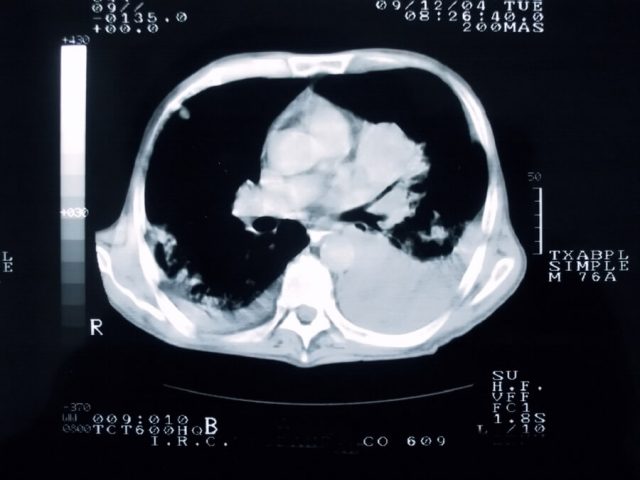Additional Diseases Linked to Talcum Powder
Regulatory agencies and studies link long-term talc exposure to mesothelioma and ovarian cancer. Other studies link talc to other potentially fatal diseases, including lung, uterine and cervical cancer, as well as some acute respiratory diseases.
What Types of Diseases Have Been Linked to Talc?
Research and several lawsuits have linked talcum powder to ovarian cancer and asbestos-contaminated talc to mesothelioma. Additional research has also linked talcum powder to a variety of other cancers and respiratory conditions.
In general, talc-related complications are rare. Researchers are divided on whether talcum powder definitively causes many of these diseases. Some regulatory agencies acknowledge there may be a connection.
- Lung cancer
- Uterine cancer
- Cervical cancer
- Respiratory diseases
There is a difference between talc contaminated with asbestos and uncontaminated talc. Asbestos is a known carcinogen according to regulatory agencies nationally and worldwide. For example, the World Health Organization (WHO) says talc with asbestos can cause cancer, and it says genital talcum powder use can “possibly” cause cancer.
On August 2022, Johnson & Johnson announced it would stop selling talc-based baby powder globally in 2023. The company faces thousands of lawsuits that claim its product causes cancer and contains asbestos. J&J insists its decision is purely financial and has nothing to do with the products’ safety.
Talc vs. Asbestos-Contaminated Talc
A few studies say talcum powder without asbestos may cause health problems, but the majority of research results come from people working with raw talc in mines. When talc enters the body through inhalation or genital exposure, it can linger for a long period without degradation. This can trigger chronic irritation, resulting in an inflammatory response that may lead to cancer or serious other diseases.
Some experts disagree with the finding that talc causes cancer. For example, Joshua E. Muscat and Michael S. Huncharek published a 2008 review in the European Journal of Cancer Prevention that argued talc is not carcinogenic. They argue that there is no evidence that talc causes an inflammatory reaction that can lead to cancer.
“Talc is not genotoxic. Mechanistic, pathology and animal model studies have not found evidence for a carcinogenic effect. In summary, these data collectively do not indicate that cosmetic talc causes ovarian cancer,” the authors wrote. “In addition, inhaled talc in mining and milling operations is not associated with increased pulmonary tumors.”
The U.S. Food and Drug Administration recognizes talc may cause a response in the body that may develop into cancer, but the agency says there is a lack of “conclusive evidence” that shows the mineral causes cancer. The agency does not require talc products to carry warning labels that alert consumers of all the potential risks.
Lung Cancer
The U.S. Department of Health and Human Services reports that there is a possible link between talc and lung cancer risk. Specifically research connects talcum powder use to mesothelioma, a cancer that most commonly affects the lining of the lung. This is likely because of asbestos impurities found in talcum powder, rather than the talcum itself.

The Centers for Disease Control and Prevention (CDC) published results of some studies on talc miners and millers from The National Institute for Occupational Safety and Health (NIOSH). They followed 710 men who mined or milled the mineral from 1947 to 1978.
The workers were more likely to get non-cancer lung diseases as well as lung cancer compared to the general population. The CDC expected eight lung cancer deaths related to talc but found 17. NIOSH concluded the lung cancer was probably from talc exposure at the mine. The CDC agreed.
“Although smoking or work exposures at other jobs may have contributed to these deaths, we do not think they explain the entire excess,” the CDC stated in the study results. “We believe talc was also responsible.”
The medical literature, however, provides some conflicting findings about whether or not inhaling talc without the presence of asbestos contamination can cause chronic lung irritation that can lead to cancer. Several studies show an increased risk of lung cancer with long-term exposure to the mineral, while others found no increase in risk.
Most of the reports of lung cancer have come from people who work with raw talc. The American Cancer Society has said no risk of lung cancer has been reported in people who use cosmetic talc products, such as baby powder.
Uterine Cancer
Perhaps the most common use of talcum powder is for intimate personal hygiene. Women who used talcum powder in this way or who may have had it applied to them as infants may be at an increased risk of developing uterine cancer. It is thought that deposits of the material during infancy can stay in the body for a prolonged period, leading to long-term exposure and inflammation.
Some experts say that particles could travel through the vagina and into the uterus. Researchers have found talc particles in human ovarian tissue and human pelvic lymph nodes, in addition to the uterus.
Stalo Karageorgi and colleagues reported for the first time a link between genital (perineal) use of talcum powder and uterine cancer risk in 2010. They suggested talc could cause inflammation in the endometrium — the soft tissue lining of the uterus — and this may lead to endometrial cancer. This is the most common type of uterine cancer, according to MedlinePlus.
“Our results suggest that perineal talcum powder use increases the risk of endometrial cancer, particularly among postmenopausal women,” study authors said.
The study of 66,028 women found that talcum powder use:
- At least once in all women increased risk by 13%
- At least once in postmenopausal women increased risk by 21%
- At least once a week in postmenopausal women increased risk by 24%
This is the only study that shows a link between talc and uterine cancer. Other studies have not found a link between the powder and uterine cancer, according to the American Cancer Society. The organization says more studies are needed.
Cervical Cancer
Researchers theorize that talc causes uterine and ovarian cancer by entering the vagina and making its way into the uterus and the ovaries. To get there, it has to pass through the cervix.

Some women have filed lawsuits against baby powder makers claiming the talc caused their cervical cancer. They use a particular study to make their argument.
Scientists in Wales first discovered particles of talc embedded in cervical tumors in 1971. They published their findings in The Journal of Obstetrics and Gynecology. This has led to speculation that there is a link between the use of talcum powder and cervical cancer.
Researchers reported they found the particles deep in the tissues. Compared to the particles found in ovarian tumors, the particles in the cervix were larger. They found talc in 12 out of 21 cervical tumors examined.
There hasn’t been enough research to conclusively say whether talcum powder can cause cervical cancer. Since this study was published in 1971, there have been no other significant findings.
Respiratory Diseases
Talc can be harmful if it is swallowed or inhaled. When a person applies talcum powder, particles of talc enter into the air and become easy to breathe in. According to the CDC, some studies show an increased risk of respiratory diseases in people with long-term exposure to talc, though this has been mostly limited to people who work with commercial talc in mines or mills.
“These cases represent only the most severe episodes. The true incidence of baby powder inhalation is grossly underestimated.”
It can be especially dangerous to infants. The American Academy of Pediatrics advises against use of baby powders containing talc. Howard C. Mofenseon and colleagues looked at 25 cases of talcum powder inhalation in infants in their article published in Pediatrics and found 20% (5 out of 25) of those cases ended in death.
“These cases represent only the most severe episodes. The true incidence of baby powder inhalation is grossly underestimated,” the authors wrote.
Most people who use cosmetic talcum powder products such as baby powder have not reported any complications.
Pulmonary Talcosis
Acute or chronic lung irritation when talc imbeds in the lungs is called pulmonary talcosis. In one 2010 letter to the editor published in European Respiratory Review, doctors shared the case of a 36-year-old woman who suffered from coughing and shortness of breath that lasted several months.
She had used talcum powder all over her body all her life. Doctors found talc particles in her lung biopsy and diagnosed her with talcosis. After she stopped using the powder, her symptoms improved.
In a 2011 case study published in Respiratory Medicine CME, a woman developed a persistent cough and had unintentional weight loss. For the last 20 years, she had used baby powder at least twice a day and on her bed sheets.
Tests revealed she had interstitial lung disease (scarring of the lungs) and tissues filled with a crystalline material. Doctors identified the material as talc.
Pneumonia
Some studies also link talcum powder to pneumonia, particularly in children. Dr. William Edmonds published some of the earliest literature detailing a case of pneumonia from talcum powder inhalation in the Journal of the American Medical Association in 1923.
Edmonds wrote about an 8-month-old child who was playing with a can of talcum powder. The powder covered the child’s face and mouth. Later the child had difficulty breathing and developed a fever of 104.6 which did not come down in spite of treatment. The doctor noted gray and whitish discharge and congested lungs. The child died two days later and had lungs filled with fluid.
Calling this number connects you with a Drugwatch.com representative. We will direct you to one of our trusted legal partners for a free case review.
Drugwatch.com's trusted legal partners support the organization's mission to keep people safe from dangerous drugs and medical devices. For more information, visit our partners page.


